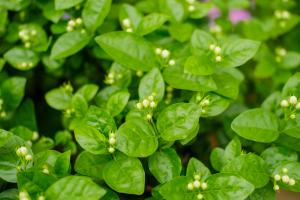Introduction
Black walnut trees are a valuable addition to any property. They are not only aesthetically pleasing, but they also provide a source of wood and edible nuts. Planting black walnut trees from the nut is an economical way to establish new trees. In this article, we will explore the steps to successfully grow black walnut trees from nuts.
Step 1: Collecting Nuts
The first step to planting black walnut trees from nuts is to collect the nuts. You can either gather them from trees that are already growing on your property or purchase them from a reputable dealer. Make sure to choose nuts that are free of cracks or holes that can allow moisture to penetrate and spoil the nuts.
Step 2: Seed Preparation
Once you have collected the nuts, the next step is to prepare them for planting. Start by soaking the nuts in water for several hours, or overnight. This will help to remove any remaining fruit flesh and make it easier for the seedling to emerge. You can also scarify the nuts by rubbing them with sandpaper or cracking the shell slightly to help them germinate faster.
Step 3: Planting the Nuts
Choose a site with well-draining soil that receives full sun. Dig a hole 2-3 inches deep and place the nut in the hole with the pointed end facing up. Cover the nut with soil and gently press down to ensure good contact with the soil. You can also plant multiple nuts in the same hole to increase the chances of a successful germination. Leave a space of at least 6 feet between the nuts to provide adequate growing space.
Step 4: Watering and Maintenance
After planting the nuts, water the area thoroughly to ensure that the soil is evenly moist. Keep the soil moist but not waterlogged throughout the growing season. In the first few years, it is important to weed the area around the nuts and protect them from herbivores such as rabbits and deer. You can also add a layer of mulch around the base of the seedling to help retain moisture and suppress weeds.
Step 5: Transplanting the Seedlings
After 1-2 growing seasons, the seedlings will have established a strong root system and can be transplanted to their permanent location. Choose a spot that provides adequate sunlight and growing space for the tree. Dig a hole twice the width of the root ball and loosen the soil at the bottom of the hole. Gently remove the seedling from the ground, being careful not to damage the roots, and place it in the hole. Refill the hole with soil and water the area thoroughly. Continue to water and maintain the tree until it is fully established.
Conclusion
Planting black walnut trees from nuts requires patience and attention to detail, but the rewards are well worth the effort. With proper care and maintenance, these trees can thrive and provide a source of nuts and wood for generations to come.

 how many times do yo...
how many times do yo... how many planted tre...
how many planted tre... how many pine trees ...
how many pine trees ... how many pecan trees...
how many pecan trees... how many plants comp...
how many plants comp... how many plants can ...
how many plants can ... how many plants and ...
how many plants and ... how many pepper plan...
how many pepper plan...






























